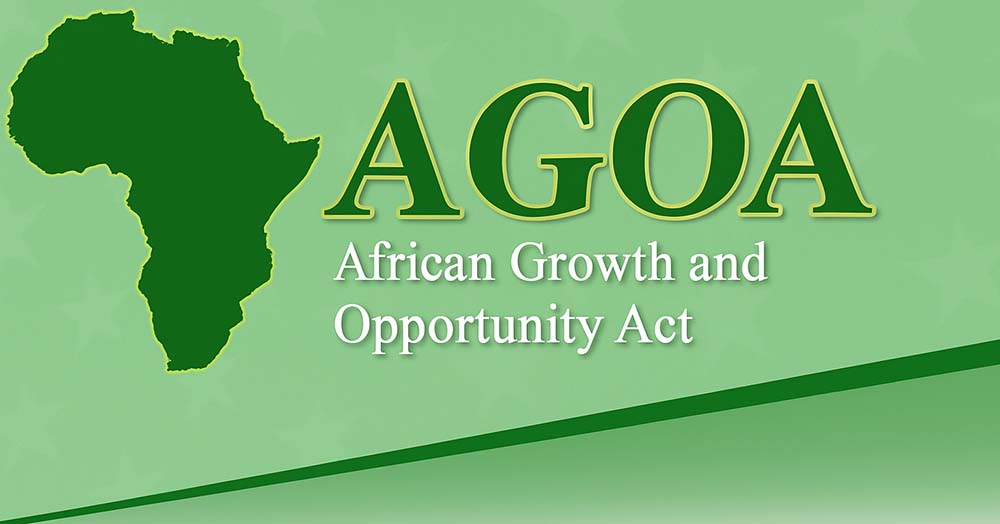
The African Growth and Opportunity Act (AGOA), which for nearly a quarter of a century has shaped the trade relationship between the United States and Sub-Saharan Africa, is set to expire on September 30, 2025. Enacted in 2000, the scheme granted eligible African countries duty-free access to the vast American market on over 6,000 products, with textiles, apparel, and agricultural goods among the biggest beneficiaries. Kenya, in particular, has emerged as one of AGOA’s leading success stories, with export processing zones flourishing, thousands of jobs created, and the U.S. becoming one of Kenya’s most important trading partners. But with the clock ticking, uncertainty and urgency have entered the conversation, forcing Kenya to rethink its place in global trade.
AGOA has always been a unilateral initiative, granted at Washington’s discretion, and its renewal has never been guaranteed. Countries can lose AGOA benefits if they do not meet the required standards on governance, human rights, or economic reforms, leaving exporters exposed to sudden changes. While there have been attempts to prolong it, including the proposed AGOA Renewal and Improvement Act of 2024, which sought to extend the arrangement until 2041, the political winds in Washington have not been favourable.
The Biden administration showed little urgency to push the renewal through Congress, and the return of Donald Trump to the White House in 2025 all but sealed AGOA’s fate. In April of this year, Trump issued an executive order introducing reciprocal tariffs for all U.S. trading partners, effectively dismantling the preferences that had defined AGOA. The order initially announced tariffs as high as 125 percent, though these were later revised to a flat 10 percent duty across imports, implemented on July 31, 2025. While less drastic than the first wave of proposals, the uniform tariff regime still means that the duty-free window AGOA provided is now firmly closed.
For Kenya, this shift has immediate and profound consequences. Kenya exported goods worth $737.3 million (Ksh95.3 billion) to the United States in 2024, according to data from the Office of the U.S. Employment in Kenya’s AGOA-accredited firms reached 66,804 in 2024, a 15.2% increase from the previous year, while the Export Processing Zones (EPZ) program supported approximately 75,600 jobs, according to the Kenya National Bureau of Statistics (KNBS)’s 2025 Economic Survey
These figures are not just statistics but real livelihoods. With tariffs now in place, the competitiveness of these exports is directly threatened. Without a new arrangement, Kenyan firms risk losing contracts to lower-cost producers where preferential or bilateral trade agreements remain intact.
Recognizing the stakes, Kenya has moved quickly to seek a replacement framework. Recently, Cabinet Secretary for Investments, Trade and Industry Lee Kinyanjui led a delegation to Washington, D.C., where talks with U.S. Trade Representative Ambassador Jamieson Greer took on added urgency. Both sides agreed to initiate negotiations toward a reciprocal trade agreement that would outlast AGOA’s sunset. Kinyanjui made the case for a structured bilateral deal that not only secures market access but also builds investor confidence.
These talks build on groundwork laid earlier in the year, and in many ways continue Kenya’s longstanding ambition for a bilateral deal. As far back as July 2022, Nairobi had expressed interest in a direct trade pact with Washington, recognizing the limitations of AGOA’s unilateral model. Now, with the clock ticking toward September 30, the push has gained momentum.
Trade deals are notoriously complex to negotiate, requiring compromises on tariffs, quotas, standards, and dispute mechanisms, and ratification processes can drag on for years. Kenya’s challenge is to secure at least an interim arrangement that can protect its exporters from sudden shocks, while laying the foundation for a more comprehensive agreement in the future.
AGOA has not only provided revenue but also stimulated industrialization, created jobs for young people and women, and linked Kenya more firmly to global supply chains. Its demise could erode those gains unless a credible successor emerges.
There is also the broader African dimension to consider. While Kenya is negotiating bilaterally, the African Union has long pushed for collective approaches to trade, particularly under the African Continental Free Trade Area (AfCFTA). Some argue that the expiry of AGOA presents an opportunity to rethink Africa’s bargaining power and pursue regional integration more vigorously, rather than relying on unilateral benevolence from Washington. The reality for Kenya, as for many African economies, is that the U.S. market remains too important to risk. Without guaranteed access, exporters face an uphill climb.
At the same time, the new global environment presents opportunities. A reciprocal trade pact, while demanding more from Kenya in terms of compliance and openness, could provide stability and predictability lacking under AGOA. It might also expand the scope of cooperation beyond textiles, covering agricultural products, digital services, and investment facilitation.
For American businesses, Kenya’s role as an East African hub, strategically located, relatively diversified, and politically stable, makes it an attractive partner in a region increasingly courted by China, the European Union, and the Gulf states. In this sense, AGOA’s end does not necessarily spell decline; it could mark the beginning of a more balanced and mutually beneficial relationship.
As September approaches, all eyes will be on the progress of Kenya–U.S. talks. For Kenya’s exporters, the negotiations are not abstract diplomacy but a matter of survival. For policymakers, they represent a chance to secure Kenya’s place in a shifting global economy. And for Africa more broadly, they raise a larger question about how the continent positions itself in an era of multipolar trade. What comes next must be built, negotiated, and defended, not just for Kenya’s benefit, but for Africa’s broader economic sovereignty.
